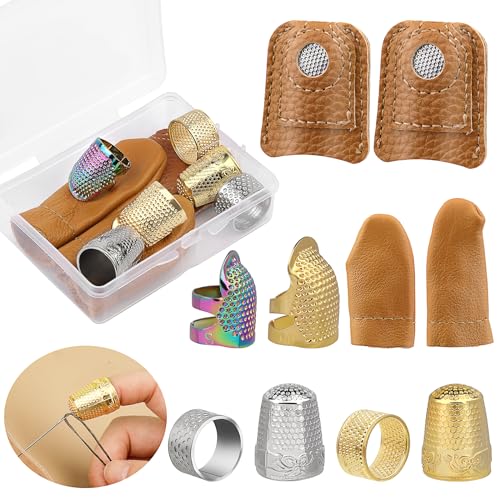Understanding the Thimble Grip
A thimble grip is a protective covering that is worn on the finger while sewing, quilting, or doing any type of needlework. It is designed to provide a better grip on the needle and protect the finger from getting pricked. Thimble grips come in various materials such as metal, rubber, plastic, or leather, and can be adjusted to fit different finger sizes.
Choose the Right Thimble Grip
When it comes to improving thimble grip, choosing the right thimble grip is essential. The grip should be comfortable to wear and fit snugly on your finger. The material should be sturdy enough to provide a good grip on the needle without slipping. Consider trying different types of thimble grips to find the one that works best for you.
Use a Thimble Grip with Rough Texture
If you find that your current thimble grip doesn’t provide enough grip on the needle, consider using a thimble grip with a rough texture. This will help increase the friction between the thimble grip and the needle, making it easier to hold and manipulate the needle while sewing. Look for thimble grips made from materials such as rubber or rubberized plastic, as they tend to have a rougher texture.
Try Thimble Grips with Adjustable Fit
If you’re having trouble finding a thimble grip that fits your finger properly, consider trying thimble grips with an adjustable fit. These thimble grips typically have a mechanism that allows you to adjust the size, ensuring a snug fit on your finger. This can greatly improve the grip and prevent the thimble grip from slipping while sewing.
Practice Proper Thimble Grip Technique
Even with the best thimble grip, it’s important to practice proper technique to improve thimble grip. Here are a few tips:
- Hold the needle correctly: Hold the needle between your thumb and middle finger, with the thimble grip placed on your index finger. This will provide better control and stability.
- Apply gentle pressure: Apply gentle pressure with the thimble grip against the needle to prevent it from slipping.
- Position the thimble grip correctly: Make sure the thimble grip is placed securely on your finger, with the rough texture facing towards the needle.
- Practice regularly: The more you practice using a thimble grip, the better your grip will become. Set aside dedicated time to practice sewing with a thimble grip to improve your skills.






